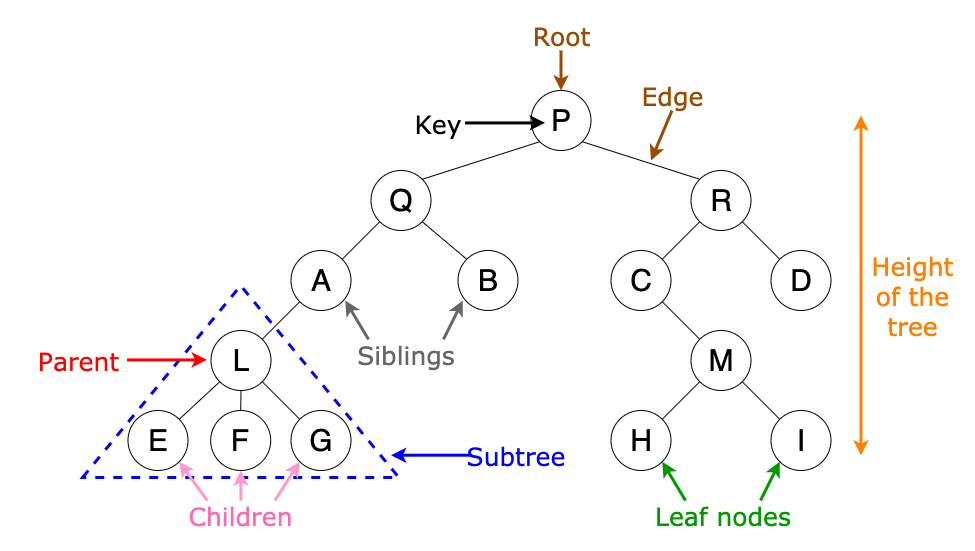Trees
Common Terminology
- Node - A Tree node is a component which may contain it’s own values, and references to other nodes
- Root - The root is the node at the beginning of the tree
- K - A number that specifies the maximum number of children any node may have in a k-ary tree. In a binary tree, k = 2.
- Left - A reference to one child node, in a binary tree
- Right - A reference to the other child node, in a binary tree
- Edge - The edge in a tree is the link between a parent and child node
- Leaf - A leaf is a node that does not have any children
- Height - The height of a tree is the number of edges from the root to the furthest leaf

Traversals
- Traversing a tree allows us to search for a node, print out the contents of a tree.
- There are two categories of traversals when it comes to trees:
- Depth First.
- Breadth First.

Depth First
- Here are three methods for depth first traversal:
- Pre-order:
root >> left >> right
- In-order:
left >> root >> right
- Post-order:
left >> right >> root

Breadth First
- Breadth first traversal iterates through the tree by going through each level of the tree node-by-node.

Binary Tree Vs K-ary Trees
- Trees can have any number of children per node, but Binary Trees restrict the number of children to two (hence our left and right children).



